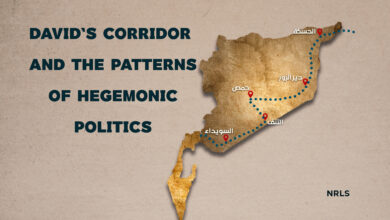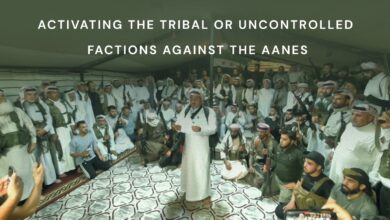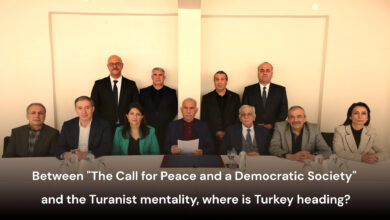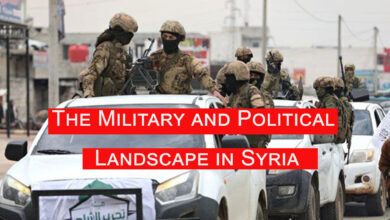Liberty and Syrian dignity in its 12th anniversary

The sun of the so-called “Arab Spring” has risen from the West. It is no longer hidden that the diagram of the revolutions broke out in some Arab countries began with sparks ignited by Bouazizi in Tunisia in response to the miserable life that the citizen lives in these countries. This spark was the nail in the coffin the regimes of the region that had ruled for decades. The spark spread like wildfire from Tunisia to Libya, Egypt, Yemen, and Syria. These regimes had come to power in close periods and carried the same ideological, Arabic and nationalist tendencies. They also raised the same slogans that oppose imperialism, and call for global socialism and other slogans that were fashionable in that era.
In Syria, the youth began taking to the streets on the fifteenth of March to demand the most basic rights of freedom and dignity in life, however, the response of the Baathist regime was clear and frank from the first day of the protests, as it used repression, force, and non-acceptance of the other in any way. These peaceful protests lasted for more than six months in full view of everyone, especially the major countries that consider themselves the protectors of the global stability, and the United Nations bodies and organizations that consider themselves responsible for global security and stability.
The defections that took place in the Syrian army were the first building block for the militarization of the revolution along with the extremist ideology that was originally prepared. Of course, the regime had the same goal in order to prove to the world its theory that it clung to and its goal, which is: it is a global conspiracy, external fingers, and incitement to unity and national cohesion. As a result, it got what it wanted, and the militarization of the revolution was the coup de grace for the poor Syrian citizen who has nothing but the air of the homeland and a simple house that shelters him from the treachery of time. One of the contradictions that we have lived through since the beginning of the Syrian crisis is an image that expresses the extent of the regime’s negligence and its inferior view of the poor citizen by writing “National Unity” on one of its tanks. Is it possible for a sane person or even an insane person to believe that the tank is the one that will bring about national unity? Is the national unity necessarily the one party, the one flag, and the one president who has no partner, imposed without any possibility, choice, or even thinking of an alternative?
With the formation of armed factions here and there, accusations of killing demonstrators who were dying from the front and from the back became exchanged, and the arena mixed with bombs on the field. Insecurity of the Iraqi neighbor played an important role in the intervention of al-Qaeda in the Levant; al-Nusra Front and then the Islamic State (ISIS). So, Syrian people had to pay the heavy price of the regional and international war taking place on their lands. They were not only spectators, but rather the axis of the game, so each party kicked it them in the direction and according to the whims. As a result, the Syrian people themselves became divided between those who are biased to this axis or that but without any benefit. All the experiences of the neighboring revolutions were applied on the Syrian model starting from the formation of a national council for the opposition to the formation of blocs, axes, platforms, and coalitions but to no avail. It is no longer a secret to anyone that the fragmentation of the forces of the so-called Syrian opposition in many positions, their lack of intellectual coherence or clarity in their program, and their future vision for tomorrow’s Syria, is one of the most important reasons that led to the situation as it is today.
In the midst of all this chaos, a third line and a new thought emerged on July 19, 2012. The spark was launched from the city of Kobani, a Kurdish city in northern Syria, and it was led by the People’s Protection Units (YPG). This revolution followed a clear and explicit methodology, which adopts the ideology of the democratic nation based on the leadership of the people themselves. So, the first building blocks of popular institutions were formed such as the People’s House, cultural institutions, language institutions, and the formation of the Asayish (Internal Security Forces) to maintain security and stability in the midst of security chaos resulting from the state of vacuum. This thought, approach, or third line was met with absolute rejection by the chauvinistic and puritanical currents. This thought proved with the passage of time that the Syrian crisis cannot be resolved through the nationalist, religious perspective or narrow power.
The Syrian arena was far from the international external powers, however, the Arab regional powers, especially the Gulf States represented by Saudi Arabia and Qatar, in addition to Iran and Turkey, were the ones that controlled the Syrian file, each according to its whims and interests, so the radical Islamist forces such as al-Qaeda and ISIS kept up with its inhumane practices and intimidation of the people, which resulted in the intervention of the US-led Global Coalition to Defeat ISIS, as the first of those involved in the crisis directly, publicly and militarily in the city of Kobani and its support for the revolutionary forces active on the ground, which served as the seed of ISIS’ defeat successively and quickly. It was also a pretext and encouragement for the Russians to support the regime in its military decision to eliminate the opposing military factions. With the abandonment of most of the regional powers and axes from their allies at home, the Syrian map on the ground has changed from day to day, and the military forces have gradually become confined to a narrow geographical hub, except for the areas controlled by the Syrian Democratic Forces (SDF), which is originally composed of the people of the region to protect it and its people. So, these forces were increasing in number and expanding in area, depending on the popular incubator who was originally willing to receive them, (perhaps because they found salvation from the state of chaos and insecurity).
With the end of the year 2018 and with the previous US administration change of its approach, alliance, and disregard for the Syrian crisis, to be a strong blow to the map that exists for its purpose, the Turkish role, in accordance with the Russian approach, was the most prominent. As a result, more Syrian lands were lost in favor of the Ottoman occupation and the Syrian mercenaries who are coordinating with it under the umbrella of what has become known as the Syrian National Army (SNA), so the loss of Afrin and then Sere Kaniye (Ras al-Ain) and Gire Spi (Tel Abyad) was a blow to the Autonomous Administration project, which includes all the Syrian communities in north and east Syria, and adopts the project of the democratic nation which includes all communities, races and religions in a participatory process to lead and organize society.
The twelfth anniversary coincides with global changes at all levels, including the Covid-19 pandemic, which affected all countries of the world and still is, the Russian-Ukrainian war and its repercussions on European countries politically and economically, and the recent earthquake that hit both Syria and Turkey and stripped the regimes of both countries of their inhumane reality. Will this memory carry a glimmer of hope for the people of the camps in the neighboring countries or even the camps inside Syria? Will the Syrian dilemma be at the top of the agenda of the major countries? There are many questions asked by the Syrian citizen.




